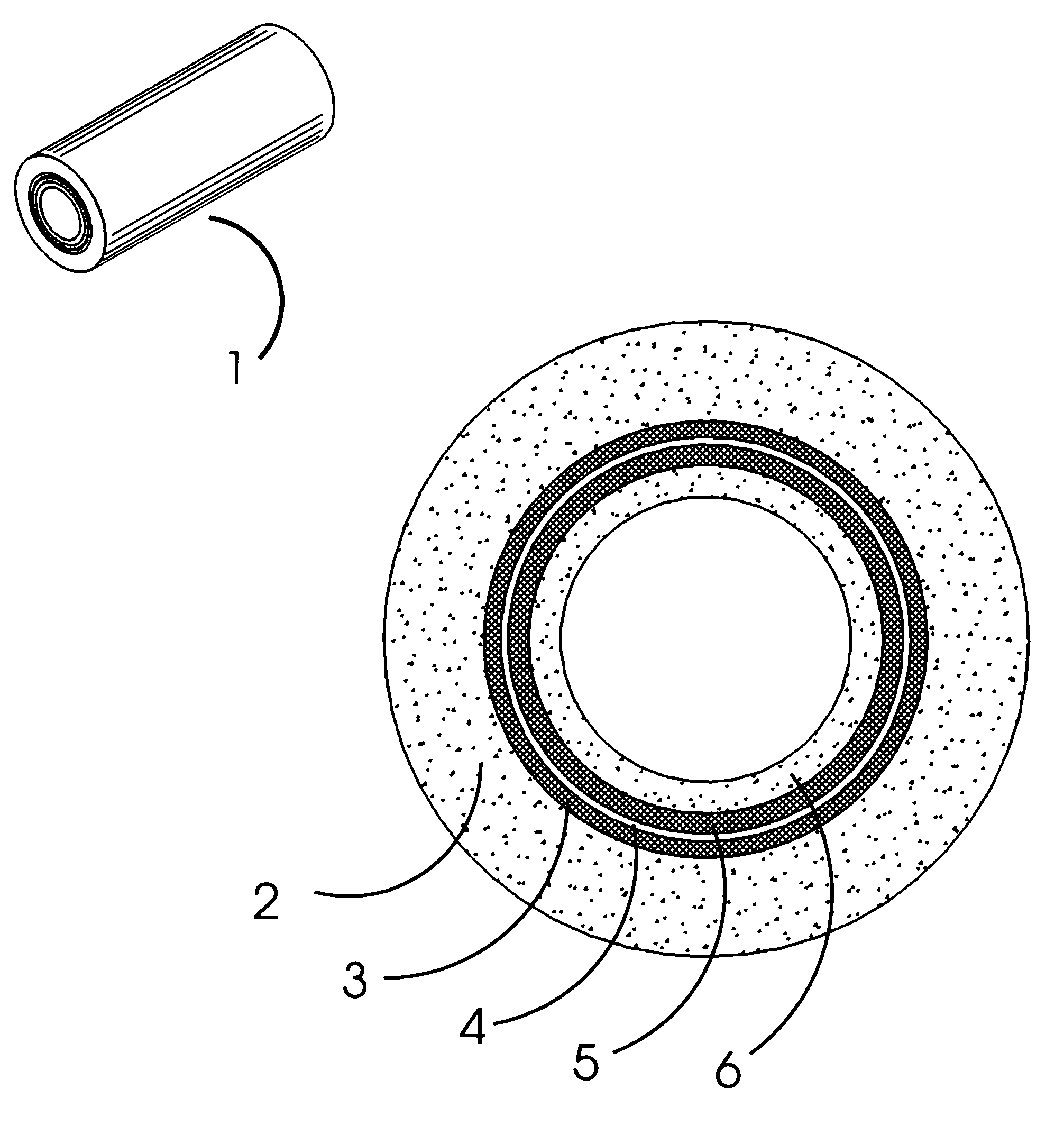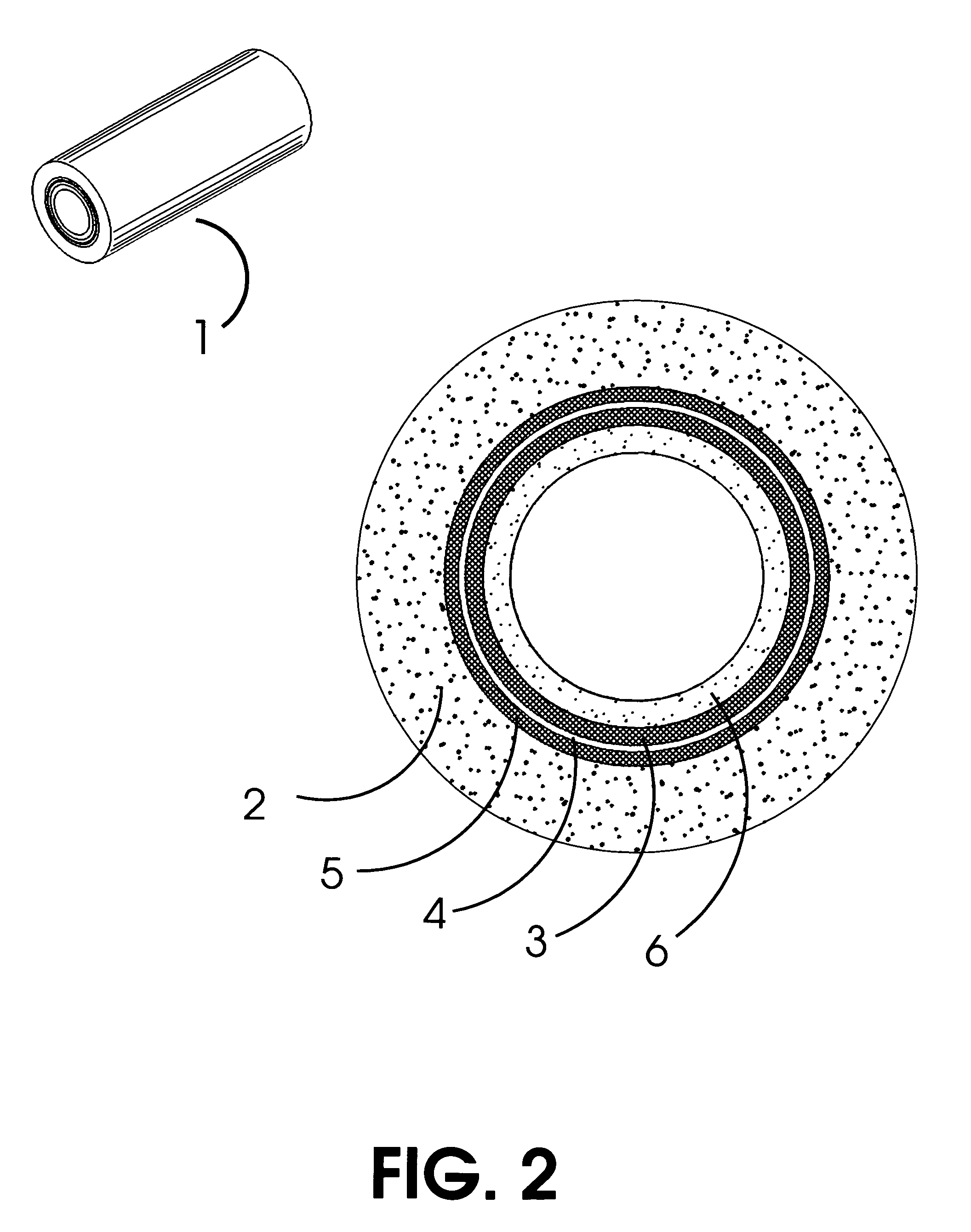Porous bi-tubular solid state electrochemical device
a solid-state electrochemical and porous tubular technology, applied in the direction of electrochemical generators, cell components, cell component details, etc., can solve the problems of less power density, substantial resistive power loss, and general recognition of significant safety and reliability problems, so as to improve the performance life, reduce the operation temperature, and increase the strength
- Summary
- Abstract
- Description
- Claims
- Application Information
AI Technical Summary
Benefits of technology
Problems solved by technology
Method used
Image
Examples
Embodiment Construction
[0045]The present invention can best be described with reference to the attached drawings. The reference characters refer to the same parts throughout the various views. The drawings are not to scale and are presented to help illustrate the principles of the present invention in a clear manner. Further, the invention is drawn to a solid state electrochemical device comprising in one embodiment a solid oxide fuel cell (SOFC) which may operate in a power mode providing a source of useful electrical power to an external circuit and in another mode as a solid oxide electrolyzer cell (SOEC) which may operate by consuming electrical power and process heat while producing hydrogen.
[0046]As described above and with particular reference to FIG. 1, the solid state electrochemical device of the present invention is shown as a solid oxide fuel cell 1. The solid oxide fuel cell 1 may be comprised of a first porous, sintered support tube 2 having successive layers of a first porous electrode 3, a...
PUM
| Property | Measurement | Unit |
|---|---|---|
| wall thickness | aaaaa | aaaaa |
| diameter | aaaaa | aaaaa |
| thickness | aaaaa | aaaaa |
Abstract
Description
Claims
Application Information
 Login to View More
Login to View More - R&D
- Intellectual Property
- Life Sciences
- Materials
- Tech Scout
- Unparalleled Data Quality
- Higher Quality Content
- 60% Fewer Hallucinations
Browse by: Latest US Patents, China's latest patents, Technical Efficacy Thesaurus, Application Domain, Technology Topic, Popular Technical Reports.
© 2025 PatSnap. All rights reserved.Legal|Privacy policy|Modern Slavery Act Transparency Statement|Sitemap|About US| Contact US: help@patsnap.com



